
Everything you need to know about E-girls?
E-girls are a youth subculture popularized by Tik-Tok and Instagram. Although the term has been around for more than a decade now, it became notably popular at the beginning of 2019, shortly after Tik Tok came out. Heavy make-up, dyed hair, chains, septum piercings, and layered clothing are part of the e-girls aesthetic.
Within the community there are several different types of e-girls: Tik Tok, gamer, emo, and artsy. But e-girls are not only known for their "kawaii" internet presence - the term was previously used to disparage women. Nowadays, while e-girls inspire young teenagers online, some make the new trend an object of ridicule.
To be an e-girl means to exist online, mediated. From here emerged two other names for them - "Internet" or "electronic" girls. In this article, I will present an online ethnographic analysis based on their Internet behavior in order to gain insight into their culture and role as a social group in the digital world. I will investigate the different kinds of e-girls, their aesthetic indexicals, and the negative attitude towards them, which construct their culture and identify them as deviant.
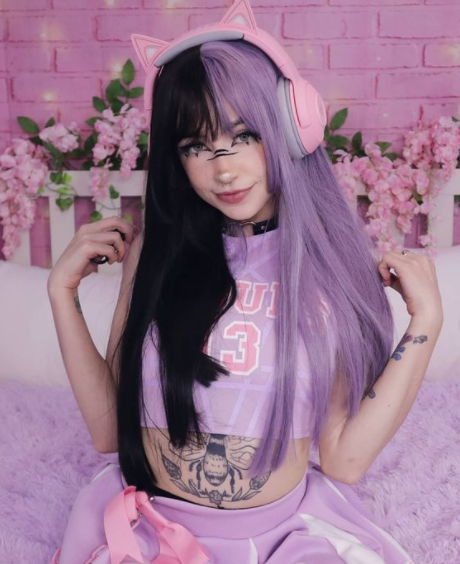
Figure 1. E-girl Rusty Fawkes
What is an e-girl?
Urban Dictionary offers us two definitions of the term:
Definition 1: e-girls are usually girls who play games online and can be found on either Twitter or Discord, they send nudes/ thirst traps or even sell them. They can also be found on twitch, the difference between a normal girl who plays video games and an e-girl is that an e-girl begs for money or sells herself for it.
As I already mentioned, the term has been used derogatorily to belittle women. Men objectified girl gamers, who they saw as attention seekers that invaded male spaces by flirting online. As Becker states in his book "Outsiders," all social groups, and in this case, gamers, create certain rules, "specifying some actions as "right" and forbidding others as "wrong.""
Male gamers portrayed e-girls as indiscriminately sexual women whose aim was to get attention from professional male gamers. Following Becker's thought, according to male gamers, e-girls' "cannot be trusted to live by the rules agreed on by the group," and their behavior was inappropriate. This is why they are regarded as outsiders.
However, Becker suggests that outsiders can reject the rules by which they are judged. An example is Rusty Fawkes (Figure 1), a 24-year-old cosplayer and Twitch streamer, who embraced this definition: "I try to bring a bit of irony and humor into the situation because I mean, I love all my fellow e-girls." Internet girls such as Rusty gave rise to a re-definition of the term:
Definition 2: An e-girl is a "category" word: it's used to assemble many different specific types of girls that fit into a certain specific trend or "type". There's many mainstream/commonly known types of e-girls, for example:
- the emo e-girl
- the tiktok/vsco e-girl (can also be know as the aesthetic e-girl)
- the gamer e-girl
- the artsy e-girl
This definition of an e-girl shows us the "modern" understanding of the term that emerged on Tik Tok. To understand it better, I will analyze the different types of e-girls.
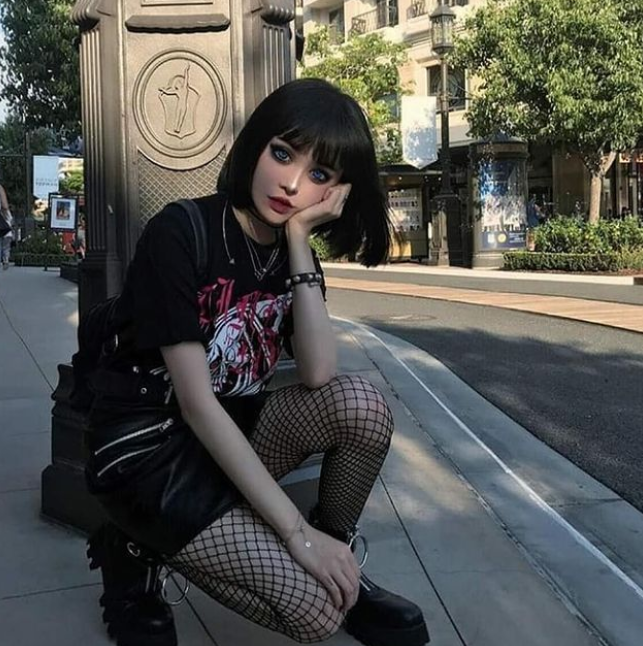
Figure 2. An emo/goth e-girl
Different types of e-girls
Often seen as "emos," goth e-girls usually dye their hair black and wear black clothes, long sleeves, fishnets, stripes, plaid skirts, and chunky boots or heels (Figure 2). They may wear black lipstick, thick eyeliner, and may draw crosses or tears under their eyes. Accessories such as leather bracelets and multiple chains complement the whole look.
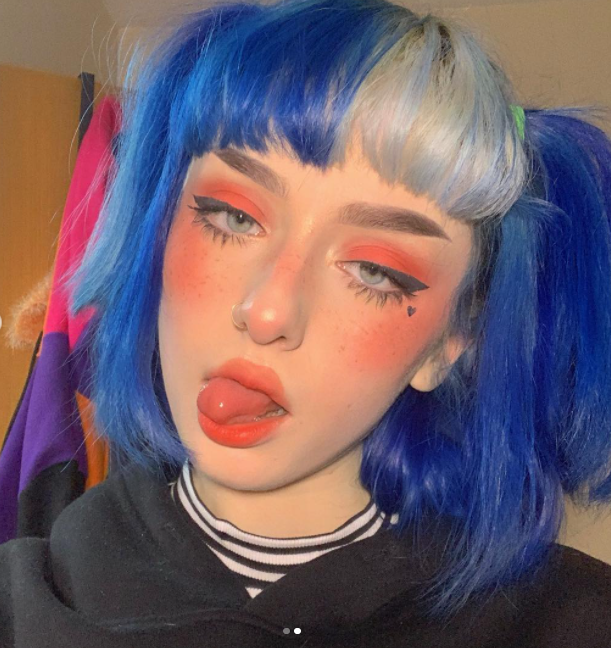
Figure 3. A Tik Tok e-girl
Tik Tok e-girls gained popularity on the social media platform, as we can tell from their name. They wear an excessive amount of blush on their cheeks and noses along with black hearts under their eyes (Figure 3). These e-girls wear thick eyeliner and short dresses and are often compared to Manga characters. Sometimes wearing wigs, their hair is typically a non-natural color, such as pink or blue. Tik Tok e-girls outfits are either cosplay or Lolita fashion (a Japanese style, influenced by Victorian clothing).
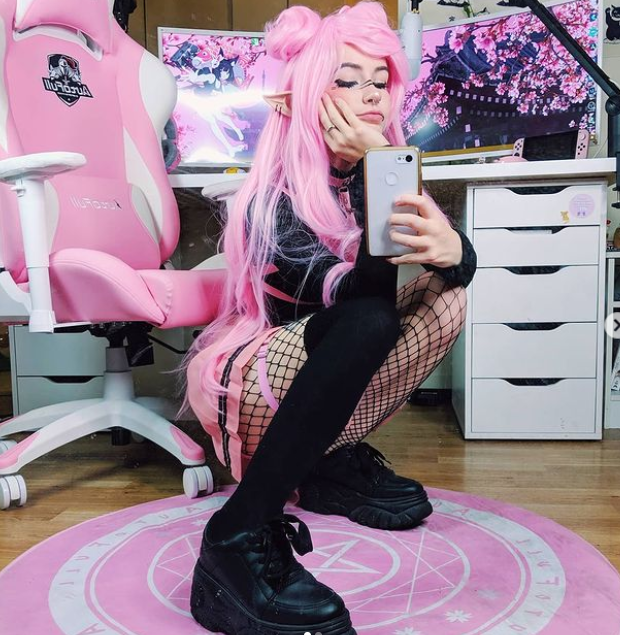
Figure 4. A gamer e-girl
As I was doing my research, it turned out that there are different types of gamer e-girls. To gain insight into them, I reached out to actual gamer e-girls who on Instagram. The first type gamer girls they described are those who "publicly play video games for attention and act like airheads to get views and money. They typically wear a lot of make-up and provocative outfits." Their actual gaming skill level ranges and cannot be generalized as good or bad. Still, the overall impression is that "they are terrible gamers."
Other gamer e-girls "truly enjoy playing video games and do not care if they receive attention or not" and are “serious and skilled."
The last type of gamer girls is those who "play privately and can be completely obsessed with the gaming world." However, they "don't really show that they game to avoid potential bullying from other men or even women." Rusty Fawkes is a prime example of a gamer e-girl (Figure 4).
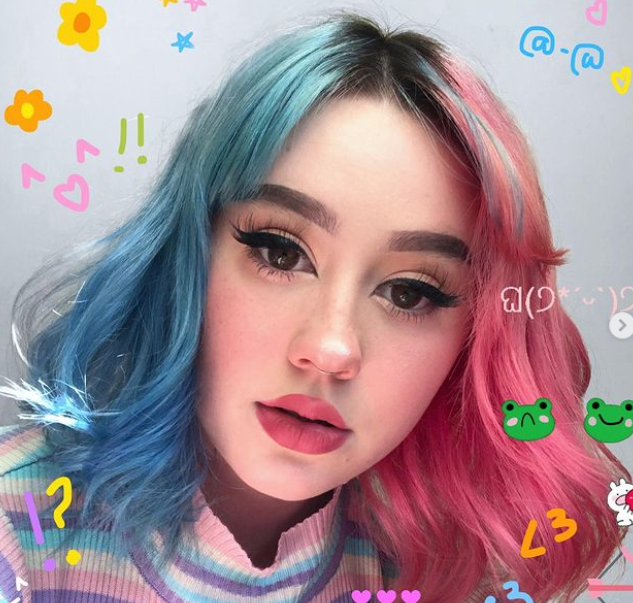
Figure 5. An artsy e-girl
Artsy e-girls are the last type (Figure 5). For the most part, they dress in pastel colors and wear scrunchies and hair clips. They are known for their make-up skills and clothing style. Their pictures usually have emojis, flowers, or hearts in them.
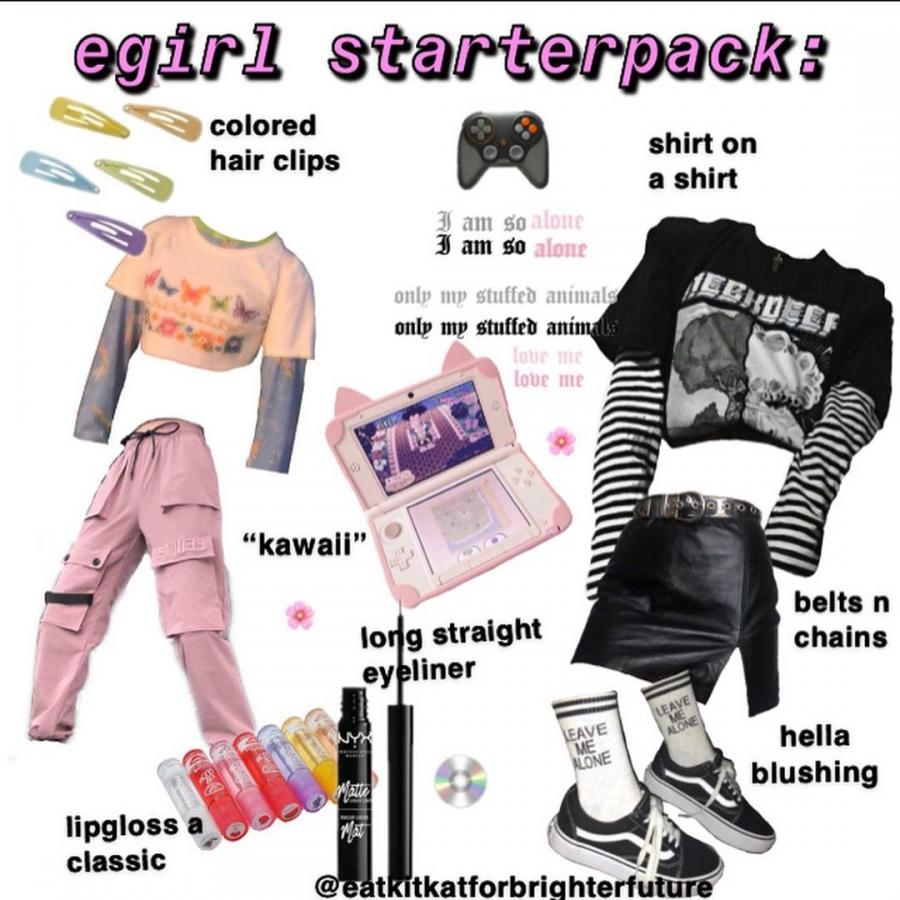
Figure 6. E-girl starter pack
Even though there are different types of e-girls, they share a common identity through commodities, music taste, love for anime, aesthetics, and social media discourse. This can be seen in Figure 6, which shows the so-called "e-girl starter pack". But what emblematic features are “enough” for a girl to be an authentic member of this identity category? As Maly and Varis (2016) suggest in their article, “Identity is a matter of ‘enoughness." This means that there are certain, often minimal, features, that a girl must adopt in order to become a 'real' e-girl. I will try to explain this through the notorious "e-girl factory" videos below.
Scrolling through Tik Tok, it is almost impossible not to come across these meme videos about the formation of Internet girls. The format of these videos is as follows: a girl opens a door with an "e-girl factory" sign on it, then someone abducts her and starts putting the stereotypical make up on her: a lot of blush, eyeliner, and hearts under her eyes. Now wearing pigtails and layered clothes, the girl starts dancing the "Me Me Me" dance. The aim of these videos is to ridicule Internet girls using stereotypes, but they also show what constitutes enough for a girl to be identified as an e-girl. We see that certain identity markers such as layered outfits, pigtails, heavy eyeliner, and blush make an Internet girl (Maly & Varis, 2016).
E-girls exist exclusively on social media
As I already mentioned, e-girl is short for "electronic" or "Internet" girl. The micro-community, "constructed through networked technologies," uses social media platforms such as TikTok, Instagram, Twitch, and YouTube (Anderson, 1991). E-girls use online spaces to express themselves by playing video games, creating videos on Tik Tok, or uploading pictures on Instagram. Electronic girls express their culture through their Internet personality. Outside the online space, they lose all the attributes inherent to them. This is why it is unlikely to spot an e-girl off the Internet. Moreover, e-girls themselves may "never know most of their fellow-members, meet them or even hear of them" (Anderson, 1991).
Internet behavior
As we have already understood, e-girls are completely Internet-based. The majority of them use Tik Tok. In their videos they frequently perform the "Me Me Me" dance (above), making the "e-girl face," cosplaying, or just acting cute. The "Me Me Me" song is an electronic pop song made by the Japanese DJ Teddyloid. The song quickly gained a cult following among anime fans, namely e-girls, who started doing the dance from the original video. As I mentioned, the same dance is used in the „e-girl factory“ videos and is indexal to an e-girl identity.
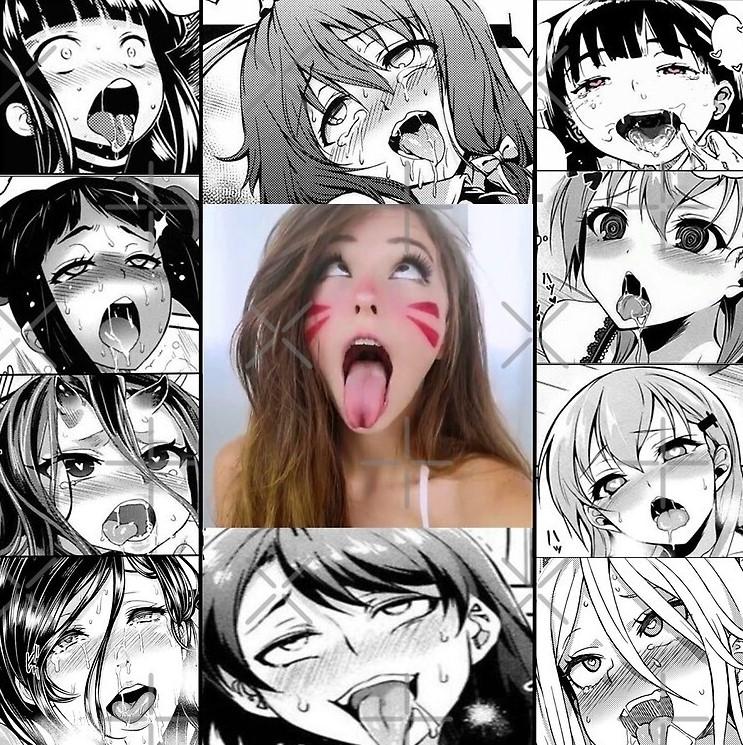
Figure 7. The Ahegao face
The notorious "e-girl face" is tongue out and open rolled up eyes (Figure 7). E-girls usually post pictures making this face on Instagram with the hashtag #ahegao. Ahegao is a Japanese term, which means an orgasm in adult anime. I suspect that many of the girls who upload such pictures are not familiar with the origin of the facial expression as the majority are underage.
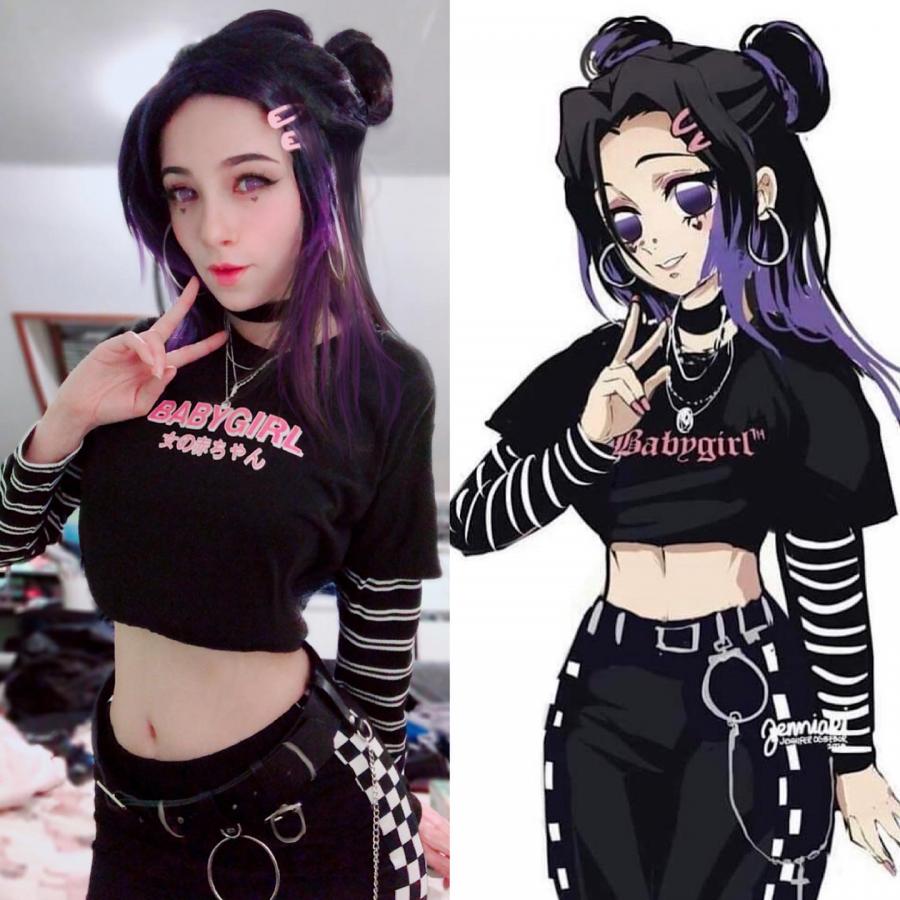
Figure 8. E-girl cosplay
Another popular trend among Internet girls is cosplaying. Anime is not only an obsession among e-girls but also one of the primary sources for cosplay. This is why it is common to see e-girls on Tik Tok wearing costumes and fashion accessories portraying a specific character (Figure 8). Moreover, the overall e-girl look has an intentional resemblance to anime characters.
Figure 9, Comments under e-girls post with "uwu"
E-girls talk
Figure 9 shows the language used by e-girls. "Uwu," as seen on many posts, means overwhelmed with cuteness. Sometimes it denotes quirky happiness or simply joy. Another commonly seen word in an e-girl discourse is "kawaii." The word is a huge part of Japanese culture and can be found in anime, art, fashion, and music. It originated from a phrase meaning "blushing," but now is widely translated as "cute."
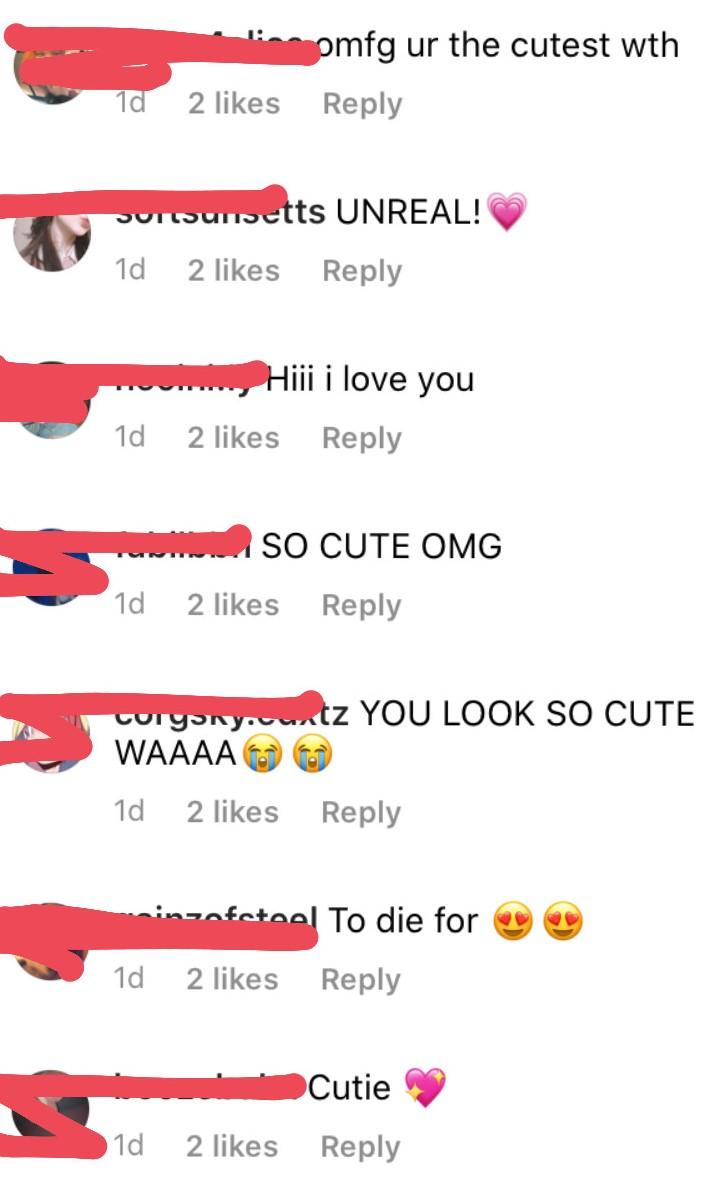
Figure 1O. Comments under and e-girl Instagram post
Looking at the comments under e-girls' posts, it became clear to me that nearly all were positive (Figure 10). Some of them included slang such as "luv" (love), "patootie" (cute girl or a girlfriend), and "kween" (queen). Such words are part of the vernacular language inherent to the social group of e-girls.
Figure 11. A kaomoji showing joy
Usually, the comments include "kaomoji" – Japanese-style emoticons. The one in Figure 11 – "(^ω^)" shows love. The character "ε" (bow lips) indicates joy and happiness. Others commonly used kaomoji by e-girls are "(´♡‿♡`)" and "(♡ω♡ )", which show love and a desire to kiss.
Figure 12. A collage of e-girls around the world
E-girls are most popular in the United States. However, if we search #e-girl in tags on Instagram, we can see that many girls worldwide have successfully adopted the indexes inherent to the electronic girl aesthetic: dyed hair, rosy cheeks, layered clothing, chains, etc. The collage in Figure 12, with e-girls from Brazil, Ireland, Spain, Russia, and New Delhi clearly shows this. Thus, we can say that electronic girls are a global micro-population, as their indexes are "recognizable in a global scale" (Maly & Varis, 2016). Being an authentic member of Internet girls' micro-community does not require having specific branded commodities. In this sense, girls from both Europe and Asia, for example, can “have, display and enact ‘enough’ of the emblematic features in order to be ratified as an authentic member” of e-girls’ identity category (Maly and Varis, 2016).
Mockery
The video "HOW TO BE AN EGIRL" above shows another ridicule of the "brand new type of irritating white girl." The YouTuber hantheloser offers a mocking lesson on how to "become the newest member of the Internet's favorite platform," namely Tik Tok. She calls e-girls "the family letdown" who seek "the precious source of validation from random strangers" because they have "daddy issues." The video is accompanied by rather negative comments such as "I'll yeet myself out this window any second" and "just call urself emo and LEAVE".
Figure 13. "Why I hate e-girls" post on Reddit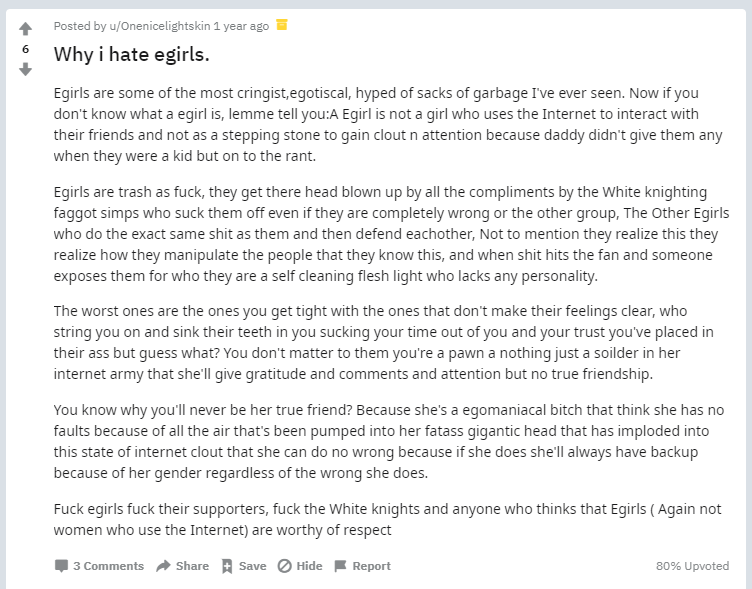
On Reddit, I came across a relatively long post called "Why I hate e-girls" (Figure 13). In it, the author expresses why he hates e-girls and calls them "trash." The post ends aggressively: "Fuck egirls fuck their supporters."
Figure 14, A collage of Quora posts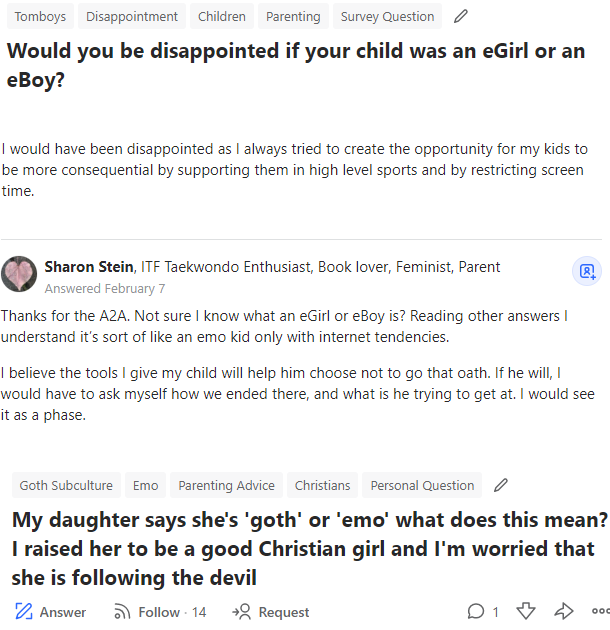
Deviance
On Quora, I found a couple of publications about e-girls by parents, seeking opinions from other users (Figure 14). They were worried about their children calling themselves e-girls or e-boys and even compared it to an "oath." The answers to those questions were even more surprising: "I believe the tools I give my child will help him choose not to go to that oath" and "I would have been disappointed as I always tried to create the opportunity for my kids to be consequential." A father, worried that his daughter is "following the Devil," "identifies deviance as the failure to obey group rules" (Becker, 1963). He has raised his girl to be a good Christian, and, in his eyes, she has failed to obey the Christian rules.
Apparently, identifying as an "e-girl" is a deviant behavior for some elders. As Becker (1963) suggests, often adults make and impose the rules for young people, as they are “considered neither wise enough nor responsible enough to make proper rules for themselves.” When elders face something that is unfamiliar to them, such as the e-girl trend, they often regard it as deviant. This contradicts with young people's understanding of what constitutes proper behavior.
Final thoughts
Being an e-girl means to exist online and to take to the Internet to express yourself. This creates the micro-community's homogenous culture - its style, talk, and normativities. Because e-girls do this openly, embracing the derogatory meaning of the term, they are often misunderstood and an object of ridicule. Indeed mockery, apart from the Internet girls' behavior, shape their image. However, e-girls have two identities. In the offline world, they live a normal life, wear less make-up, and dress differently from their online persona. Therefore, we can conclude that e-girls can easily embrace both online and offline life.
References
Anderson, B. R. O. G. (1983). Imagined communities: reflections on the origin and spread of nationalism. New York: Verso.
Becker, H. (1963), Outsiders. The Free Press.
Maly, I., & Varis, P. (2016). The 21st-century hipster: On micro-populations in times of superdiversity. European Journal of Cultural Studies, 19(6), 637–653. doi: 10.1177/1367549415597920